This is a series of articles on how to seal our calligraphy and painting works< strong>Second, let’s talk about what seals are used in calligraphy and painting?
Seal cutting originated from practical seals. For example, official seals in ancient times can prove one's official position—or declare power, issue orders, or sign official documents; for example, private seals can sign contracts, deeds, and letters. In the Song and Yuan Dynasties, the seal was played by literati and entered the field of calligraphy and painting. The practical seal was transformed into seal cutting and became an independent art including a large number of artistic factors. Now seal cutting works are used in calligraphy and painting. The above is the combination of seal cutting and calligraphy and painting art.
The earliest seal combined with calligraphy and painting should have originated from the "Zhenguan" small seal of Tang Taizong. At that time, Li Shimin collected calligraphy and painting from all over the world. Seals become his collections. At this time, the role of seals is mainly to identify collections. This is the earliest "appraisal seal".

(Li Shimin and his Zhenguan Xiaoxi)
Later, the literati gradually discovered that the seal stamped on calligraphy and painting is very "good-looking", so the literati seal gradually participated in the creation of calligraphy and painting and finally participated in the aesthetics of calligraphy and painting, becoming an indispensable element of calligraphy and painting. In modern times, if a painting and calligraphy work is not supported by a seal (seal cutting), its artistic value is often greatly reduced. However, our problem is not these, but——
What styles of seals are used in calligraphy and painting works?
Roughly, there are probably the following categories:surname seal, name seal, name seal, word seal, alias seal, place name seal, collective name seal, Zhaiguan seal, Jiyu seal, Xianwen seal (Xianzhang), Xiao Xingyin, Jianzang seal, etc., because there are too many contents, this article will first talk about the first four: surname seal, name seal , name seal, word seal.
Name stamp. The surname refers to the "surname" of the surname, and refers to the seal of the surname of the creator of calligraphy and painting, such as Xu Beihong's works:

(Xu Beihong's "Horse")
The inscription in the upper right corner reads "Guiwei (1943) Qiu Beihong, Mr. Jianchen Huijiao." The signature is only a small seal of "Xu" in Zhu Wen. This method of using seals is often used by painters. In fact, because there are many color elements in paintings, the red seal is often used as an embellishment.
Name imprint. The name seal is a seal that contains both the author's surname and the author's name. This type of seal is more traditional and is used by the most people. For example, this character by Shen Yinmo:
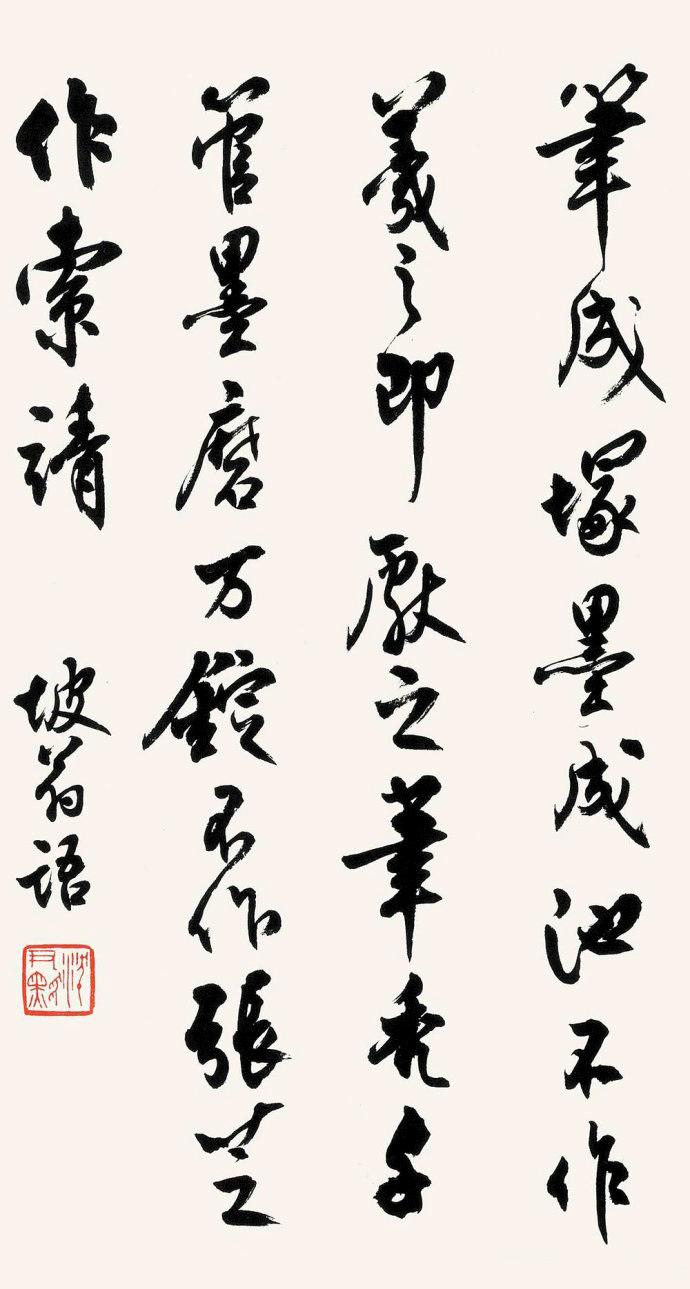
(Shen Yinmo's calligraphy)
Shen Yinmo's calligraphic work has a simple inscription in the lower left corner: "Po Wengyu." It is stamped with a Zhu Wen seal "Shen Yinmo". "The pen makes a mound, and the ink makes a pool. If it is not as good as Xizhi, it is offered; if the pen is bald, and the ink is worn out, it is not Zhang Zhi, but Suo Jing." It is a sentence in Su Dongpo's "Ti Er Wang Shu", so it is said to be "Po Weng language".
The style of the name seal is the most traditional, mostly derived from the ancient seal. This kind of seal style is also the most. The works of calligraphers and painters usually seal the name of one party, or "surname+name+seal", or add "zhiyin", "private seal", "seal letter" to the name. ", "Letter Seal", "Wei Yin", "The Seal", "The Seal Letter" and so on. But the information contained is the creator's "surname" and "first name" or only "first name". Such as Wu Changshuo's calligraphy:
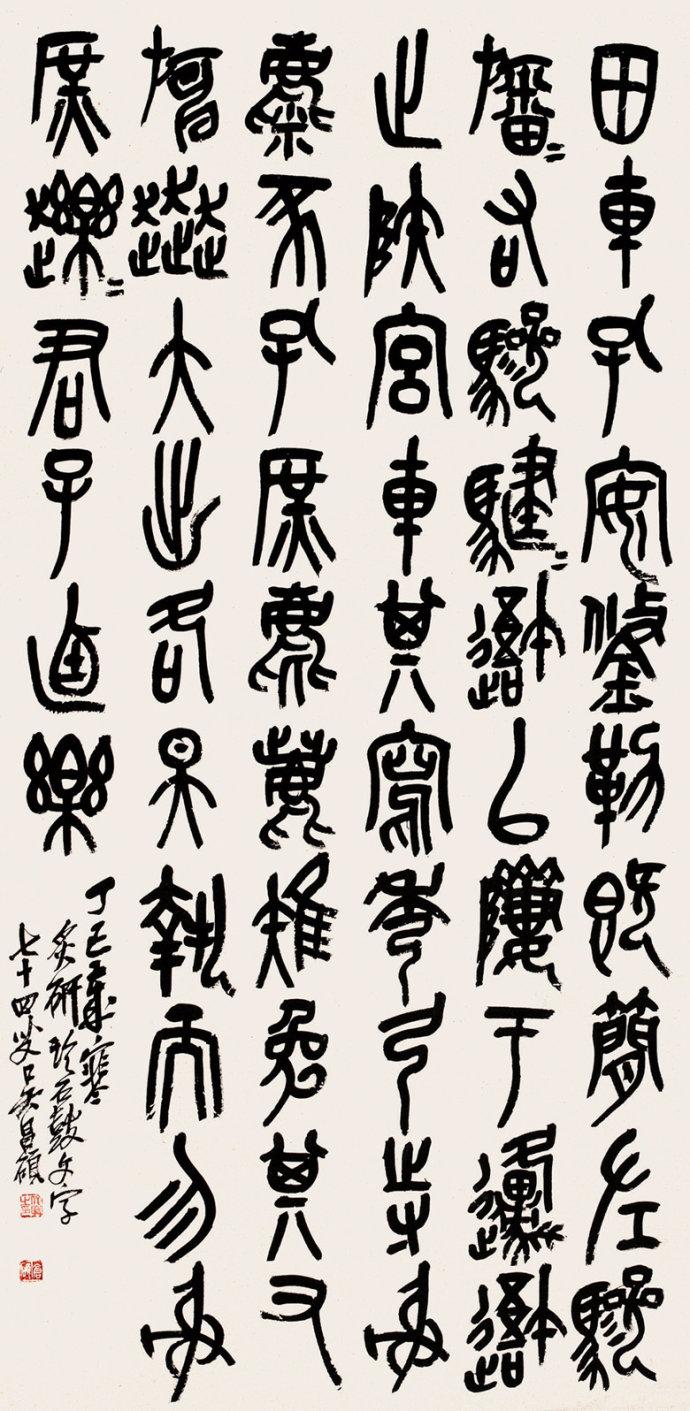
(Wu Changshuo's stone drum calligraphy)
Inscribed on the lower left: "Ding Si (1917) was cold in his old age, and he studied precious stone drum writings. Seventy-four old man Wu Changshuo." There are two seals, and the upper one is Zhu Wen "Junqing's seal" , the bottom side is written in white "Cang Shuo". The above "Junqing's seal" is the "name seal", and Junqing is Wu Changshuo's name.
Of course, there are also seals that only include the "name" of the author, such as this calligraphy work by Sha Menghai:
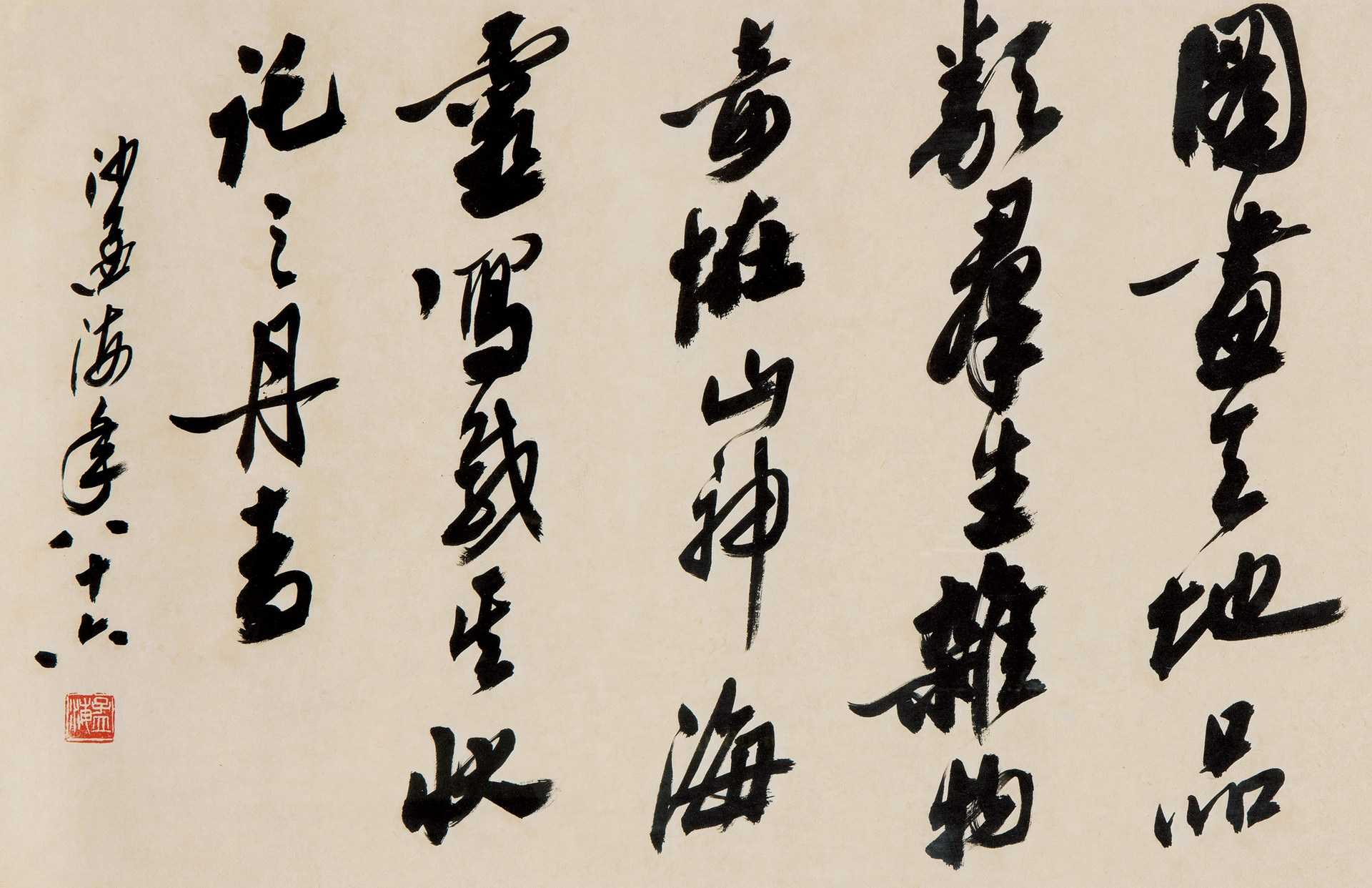
(Sha Menghai's calligraphy)
The inscription in the lower left corner reads "Sha Menghai is eighty-six years old." On one side of the seal, "Meng Hai" is printed in white inscriptions. There is only a first name, no surname, and no other superfluous characters. Another example is this painting by Qian Songyan:
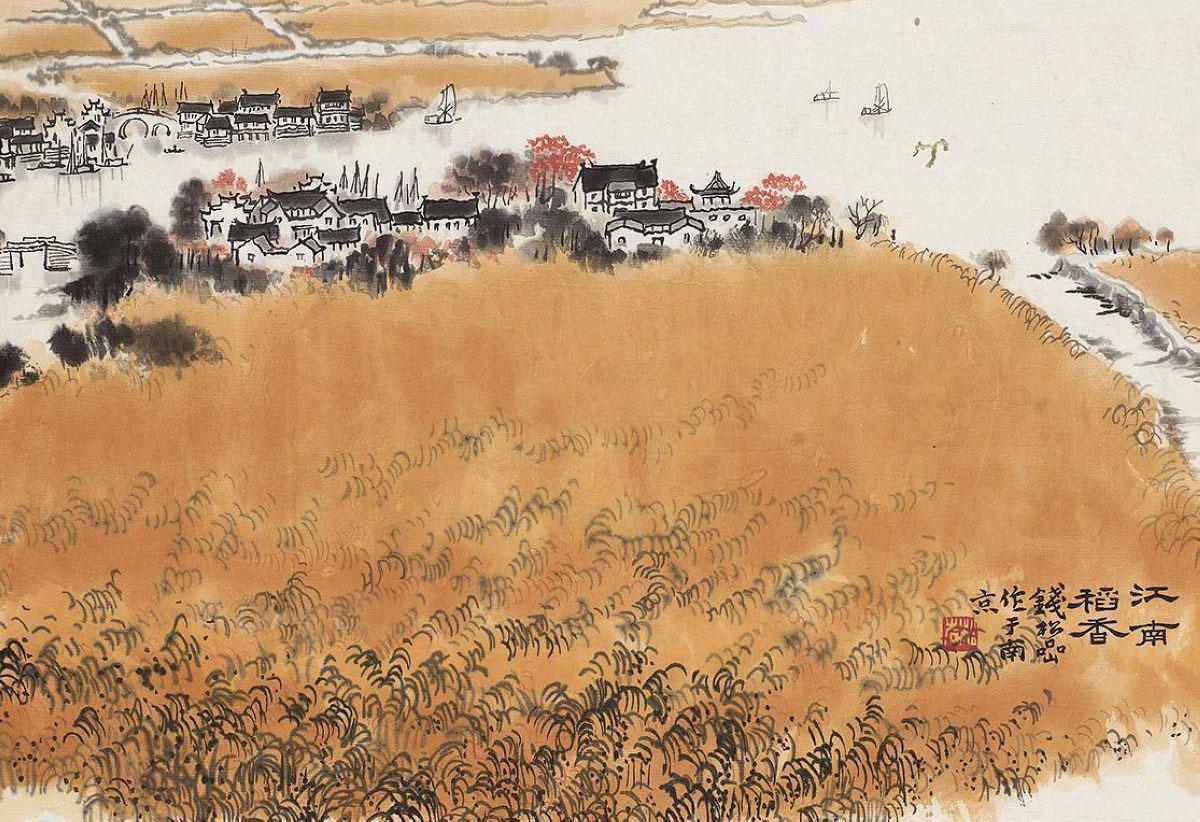
(Qian Songyan "Jiangnan Rice Fragrance")
The inscription on the lower right: "Jiangnan Daoxiang. Qian Songyan was made in Nanjing." The seal is printed with white text "Songyan", and there is also only "name".
In addition, among the name seals, there is also a palindrome seal, which is slightly different from the standard name seal. Its style is that the surname is on the upper right, and the word "print" is under the surname. It is pronounced as "name, name and seal", not "surname and seal, name and name". This is the conventional reading method inherited from Hanyin to modern people, such as this calligraphy by Zhao Zhiqian:

(Zhao Zhiqian's calligraphy)
The inscription on the lower left: "Young Confucianism, dear brother. It was written by Zhao Zhiqian in Kuaiji, the seventh year of Guangxu, in the new Wu official residence."
Word printing. That is to use the author's Biaozi as the seal to enter the seal, which was called "Biao De Yin" in the old days. Before the Qin and Han Dynasties, people mostly used name seals, but after the Tang Dynasty, people began to use "characters" to enter the seals. It should be noted that the seals of the characters cannot be engraved with the word "Yin". ", so if there is a seal with the word "yin" as the ending, it is generally the author's "name seal", not "character seal". The "cangshuo" of Wu Changshuo above is Wu Changshuo's "word". Another example is Zhao Zhiqian's flower album:
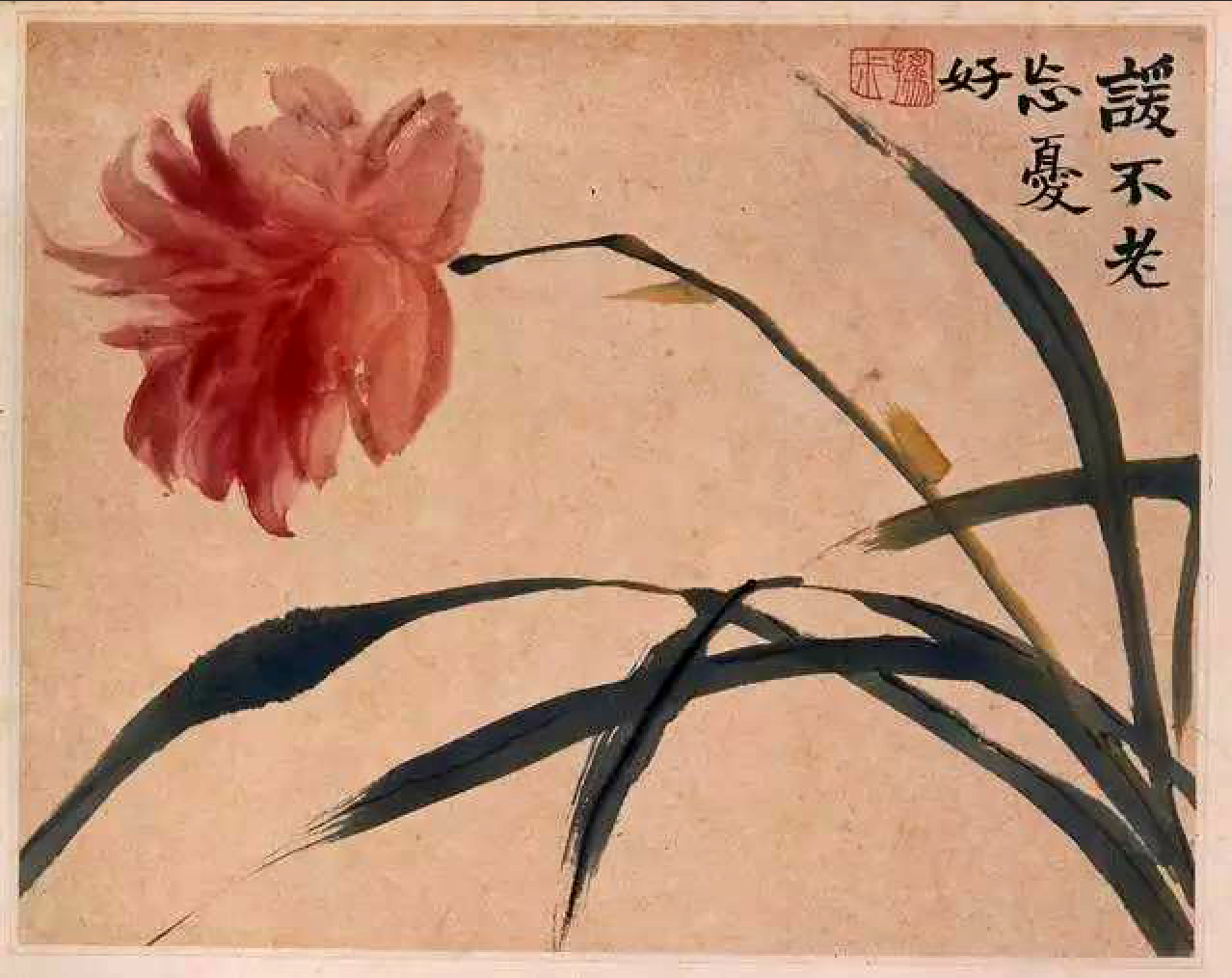
(Zhao Zhiqian's flower album)
Inscribed on the upper right: "Xiaobulaowangyouhao", and the seal inscribed with the words "撝叔", which is Zhao Zhiqian's "character seal". In addition, sometimes a surname can be added to Ziyin, such as "surname XX", or the word "surname" can be added after the surname to make "surname XX", or "surname" can be directly added under "character" to write "So-and-so's" can also add the word "father" under the word, writing "so-and-so father", where "father" is pronounced as "fu" (fǔ), originally a good name added to a man's name in ancient times, and later Refers to the "table word" of a person. We often see seal cutting masters engraving, there is "so-and-so father", which is actually "Biaoziyin". There are no more examples of this type of typography, just understand it when you encounter it.
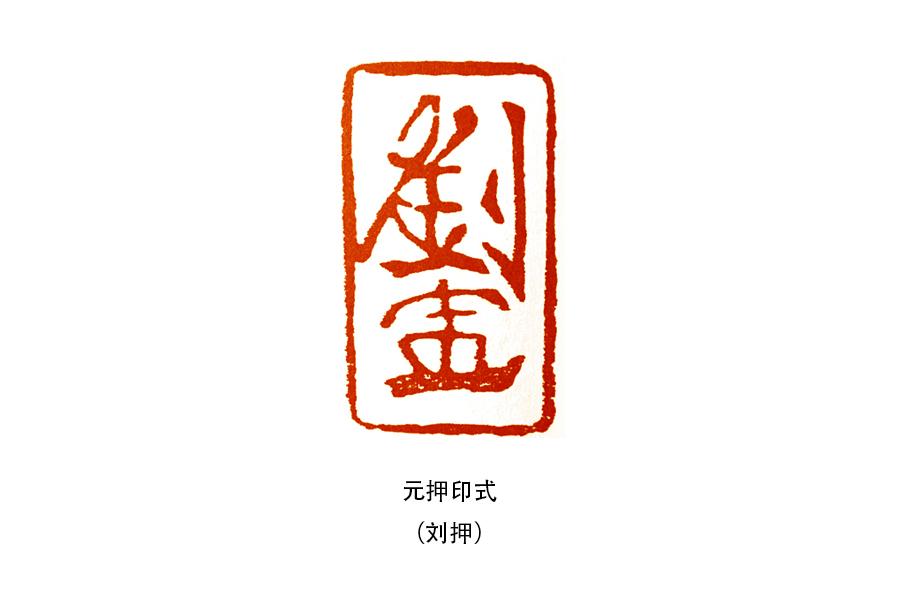
(Yuan Yi Yin type)
In addition, the name seal is also printed in Yuan Yayin, only the author's surname is recorded, and it is printed in Siling, such as the painting of the painter Pu Xinyu:

(Pu Xinshe's painting)
Inscription on the upper left: "Gengyin (1950) Spring March. Xinshe." On the two seals, the upper one is written in Zhu and the other is "old king and grandson", and the lower one is written in white "Pu Confucianism". , "Pu Ru" is the "name" of Pu Xinshe.
Surname seal, name seal, name seal, and word seal are the author's signature seals, which are the most important types of seals in calligraphy and painting works. Calligraphers and painters When customizing your own calligraphy and painting seals, you should consider the seal style, and the above can be used as a reference. As for these precautions printed during use, they will be written later.
(【How to Seal Calligraphy and Painting Works】Part 2, the picture comes from the Internet, and the copyright belongs to the original copyright owner)
Articles are uploaded by users and are for non-commercial browsing only. Posted by: Lomu, please indicate the source: https://www.daogebangong.com/en/articles/detail/How%20to%20seal%20calligraphy%20and%20painting%20works%20the%20seal%20used%20in%20calligraphy%20and%20painting%20%20surname.html

 支付宝扫一扫
支付宝扫一扫 
评论列表(196条)
测试